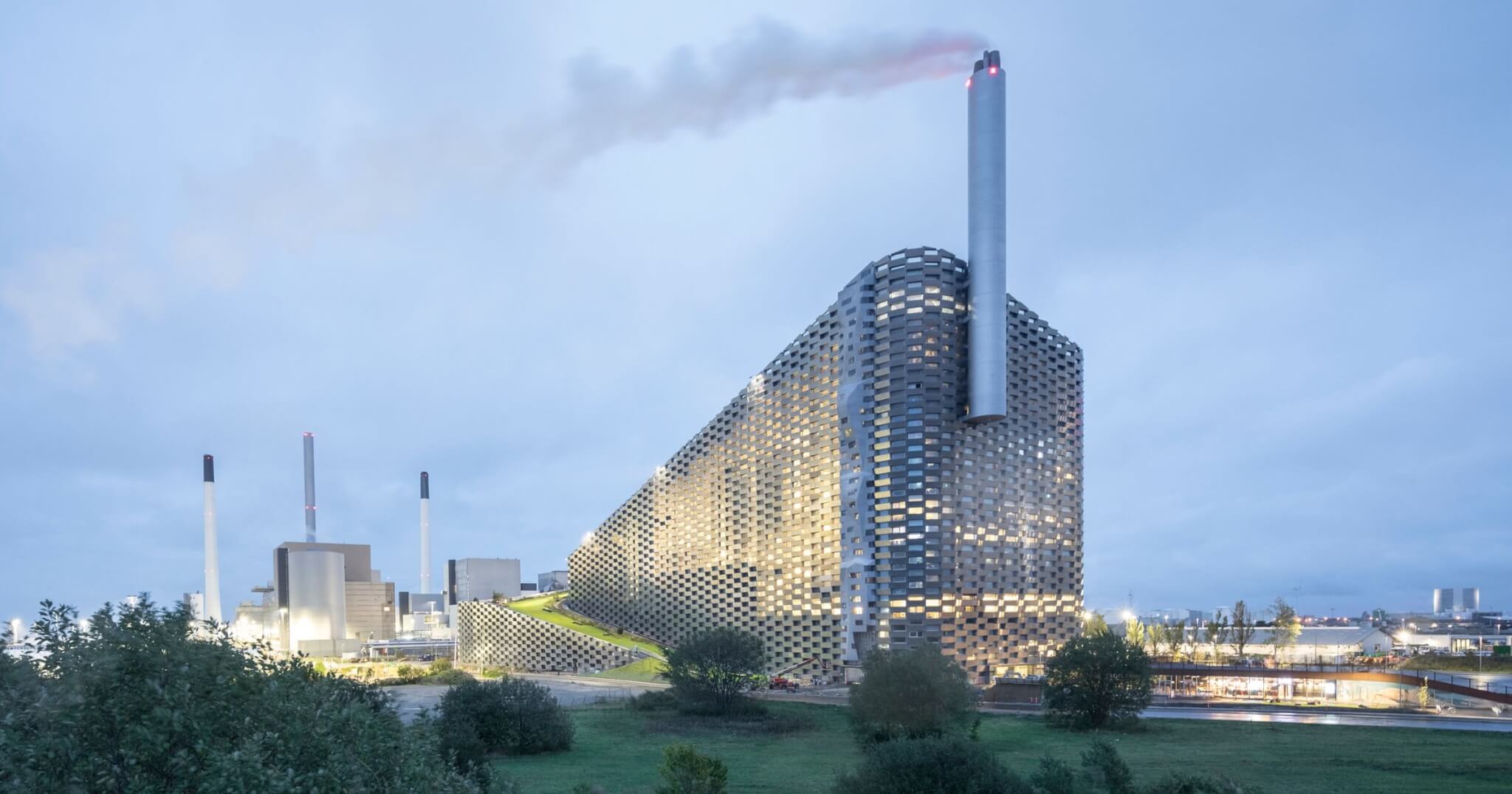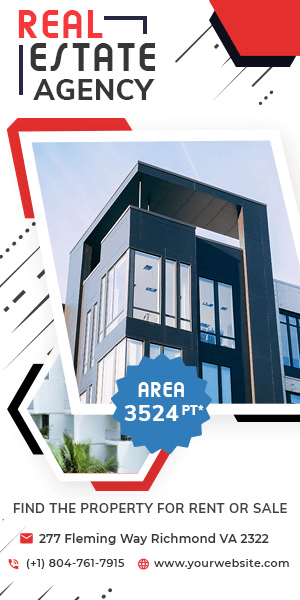Photo courtesy of https://big.dk/
Bjarke Ingels Group (BIG) is one of the most well known architectural companies that brings a flair to their projects with real-world practicality to shape memorable spaces. Their designs span offices, homes, parks, and infrastructure, reflecting creativity and environmental thinking. This article highlights some of the most standout Bjarke Ingels Group projects has completed across the world.
Bjarke Ingels Group
Founded in 2005 by Bjarke Ingels, BIG has evolved into a global practice with studios in Copenhagen, New York, London, Barcelona, Los Angeles, and additional locations. The firm brings together architects, engineers, planners, urbanists, landscape designers, and product specialists to collaborate across all stages. BIG embraces a design philosophy that balances bold concepts with on-site feasibility, evident in its own workspace located in Copenhagen’s Nordhavn district. There, the headquarters features a timber-heavy design with geothermal systems and green terraced floors, aiming to reduce carbon emissions and integrate the workplace with the surrounding landscape.
BIG approaches each project with a keen eye for sustainability. They explore low-carbon materials, renewable energy, biodiversity, and adaptive reuse in projects of all sizes and scales. Whether planning entire districts or sculptural public parks, breaks from conventional forms are common. Their “hedonistic sustainability” model suggests that buildings should be both pleasurable and resource mindful.
10 past, present, and future projects on the go from Bjarke Ingels Group
1. Google Bay View
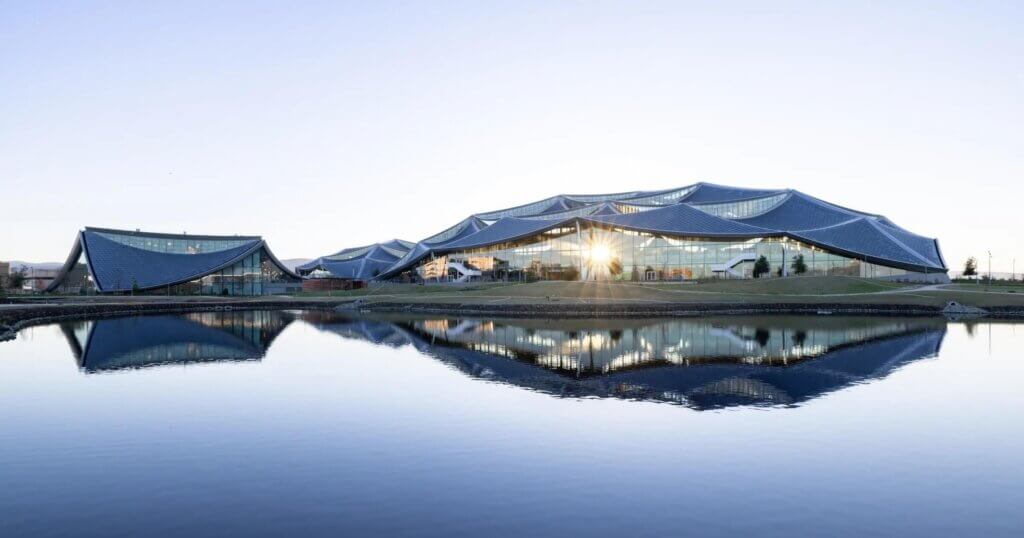
Photo courtesy of https://big.dk/
- Location: Mountain View, California, USA
- Year built: 2022
- Typology: Corporate campus
Google Bay View stands out as a model for large-scale, carbon-neutral work environments. This project by Bjarke Ingels Group has nearly 1.1 million square feet of workspace and sits among 42 acres of restored grasslands, blending office, lab, and event functions. Geothermal pile systems provide heating and cooling, and a solar “dragonscale” canopy with 50,000 panels enables 24/7 clean energy operation. A water reclamation loop recovers and recycles 90% of the cooling water used onsite.
Inside, landscape elements shape collaborative zones, while clerestory windows bring daylight deep into the workspaces, reducing reliance on artificial light. A 1,000-seat pavilion hosts public and tech events, supporting both internal use and community engagement. 240 short-stay rooms provide visitors with a convenient place to stay close to the action. Certified LEED-NC v4 Platinum and Living Building Challenge Water Petal, Bay View represents a forward-looking blueprint for carbon-neutral building strategies.
View the project: https://big.dk/projects/google-hq-3070
2. CopenHill Energy Plant (Amager Bakke)
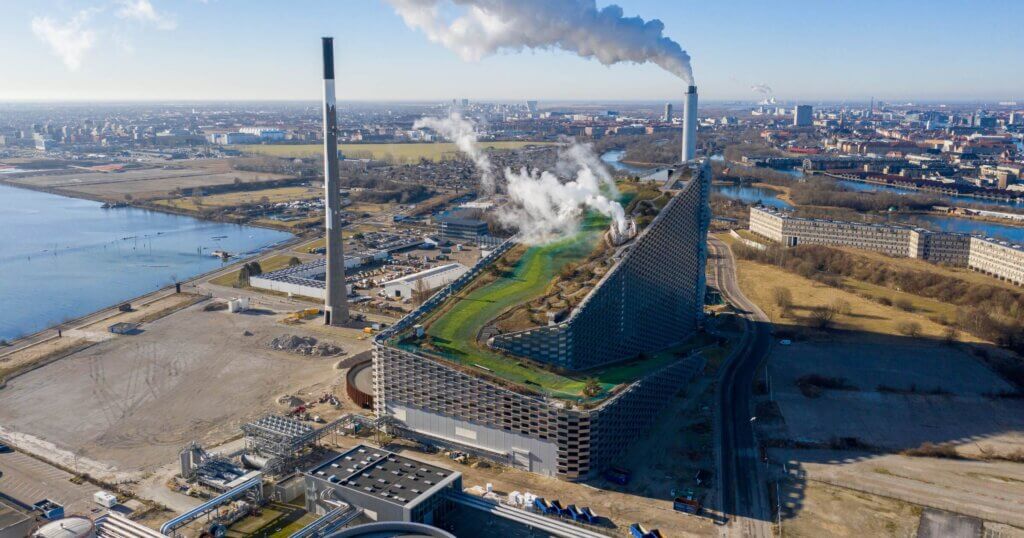
Photo courtesy of https://www.shutterstock.com/
- Location: Copenhagen, Denmark
- Year built: 2019
- Typology: Waste-to-energy + recreational facility
Amager Bakke is one of the most popular projects by Bjarke Ingels Group. It’s architecture turns a waste plant into an energy producing plant that doubles as a public recreational space. The plant converts household and commercial waste into electricity for around 150,000 homes. Designers transformed this industrial site into a year-round urban sports venue, featuring a ski slope, hiking trail, and climbing wall. A 10,000 m² green roof manages rainfall runoff and thermal loads, while insulated walls minimize heat loss and noise pollution.
The building features a visitor center and lab spaces dedicated to energy education and research. Wide glass façades offer views of steam stacks and turbines, demystifying the power generation process. The project highlights Copenhagen’s goal to achieve carbon neutrality by 2025 through the development of multifunctional public infrastructure.
View the project: https://big.dk/projects/copenhill
3. Sluishuis
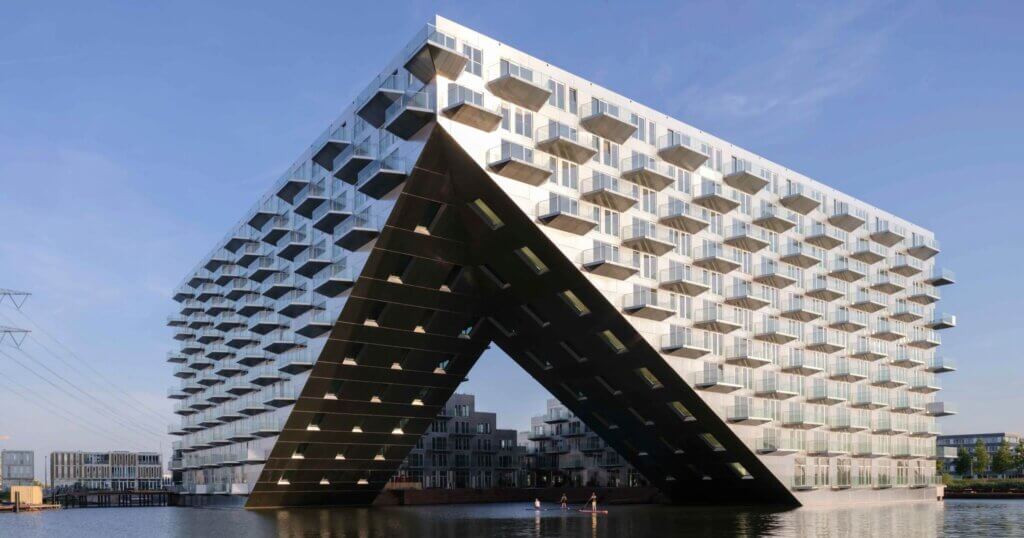
Photo courtesy of https://big.dk/
- Location: IJburg, Amsterdam, Netherlands
- Year built: 2022
- Typology: Residential water-edge structure
Sluishuis stands prominently at IJburg’s waterline—a 52-meter U-shaped residential block that floats over the lake, allowing boats to dock beneath. Housing 442 units, it combines rental and owner-managed apartments. Solar panels and a heat pump system support low-emission energy usage. The over-water walkway doubles as a public jetty, integrating the waterfront with the living environment.
Structural “backbones” carry the load of cantilevered living spaces, reinforcing the bold architectural gesture often coming with projects by Bjarke Ingels Group. Terraced roofs and balconies offer residents direct access to the water, and each multi-level unit features bay windows that frame panoramic views. The walking paths and waterways invite residents outside and integrate older water traffic routes into renewed public life.
View the project: https://big.dk/projects/sluishuis-residences-7293
4. BIG HQ (Nordhavn)
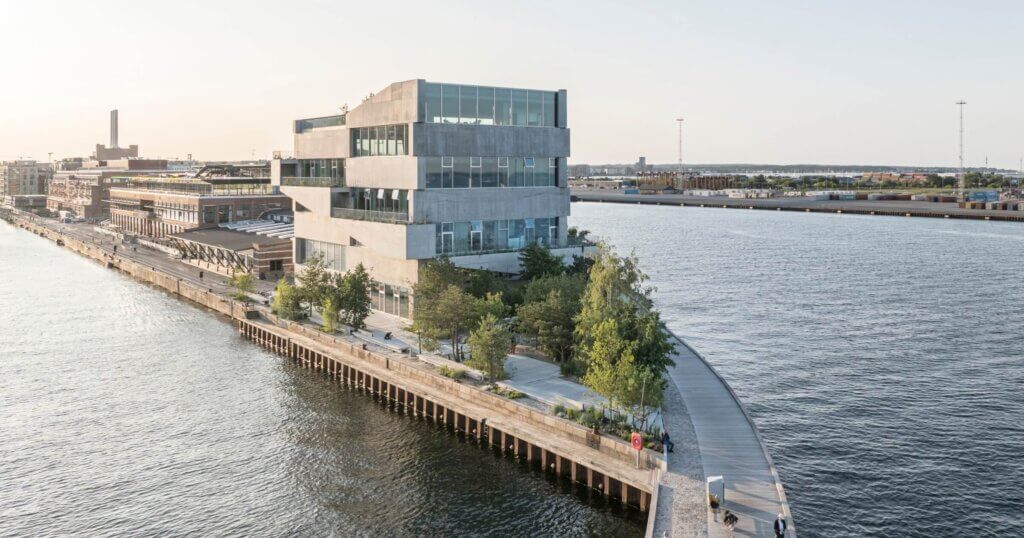
Photo courtesy of https://big.dk/
- Location: Copenhagen, Denmark
- Year built: 2023
- Typology: Office
BIG’s Copenhagen office operates as a living test bed for smart design. Seven terraced floors step up across the harbor edge, each featuring landscaped balconies and solar shading. A central spiral “ribbon” staircase weaves the levels together, serving both as a connector and an architectural statement. Interior floors offer daylight from both sides and open sightlines across activities.
The building material palette highlights sustainable innovations. FutureCem’s low-carbon concrete reduces emissions by approximately 25%, while rooftop solar arrays and geothermal systems lower operational energy consumption. Large ground-floor windows engage street life and visually unify workspace and urban areas. The project has already inspired a shift among larger Danish companies to evaluate low-carbon building options.
View the project: https://big.dk/projects/big-hq-11526
5. Oslo Science City
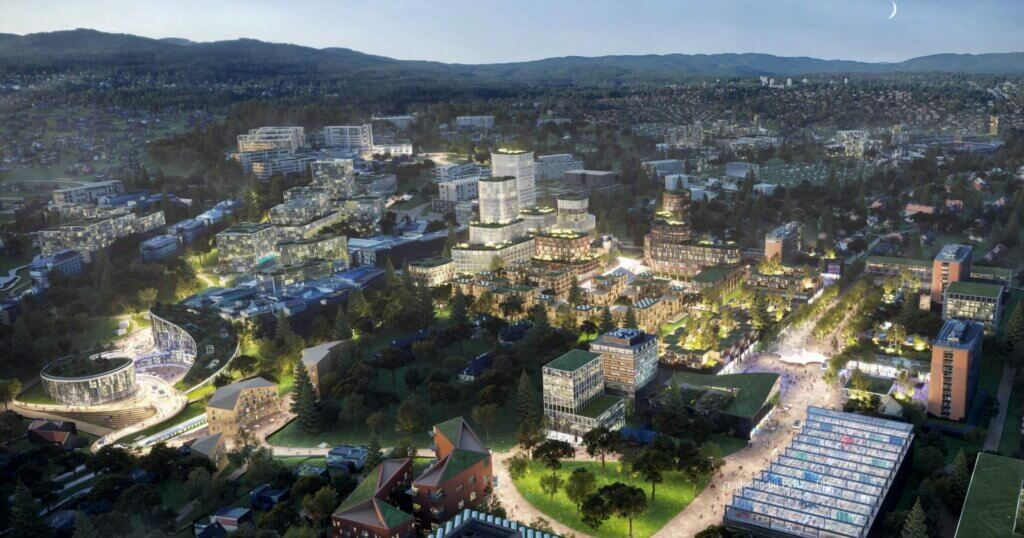
Photo courtesy of https://big.dk/
- Location: Oslo, Norway
- Year built: TBD (on-going since 2021)
- Typology: Innovation campus
Oslo Science City spans 1.4 million square meters across former docklands, transforming them into an integrated research and innovation district. The area is expected to host around 150,000 people across various facilities, including labs, offices, student housing, and green tech facilities. Buildings are oriented to maximize solar exposure and clad in high-performance glass and envelope systems. Shared mobility hubs and cycling infrastructure aim to sharply reduce carbon emissions from commuting.
Public realm design emphasizes parks, plazas, and waterways, connecting ferry routes and local neighborhoods. Community programming and startup incubators are embedded in the ground floors of office and residential buildings. BIG has mapped energy usage with modular grids to support district heating and reuse excess heat. This project serves as a test case for 21st-century mixed-use urban renewal.
View the project: https://big.dk/projects/oslo-science-city
6. The Spiral
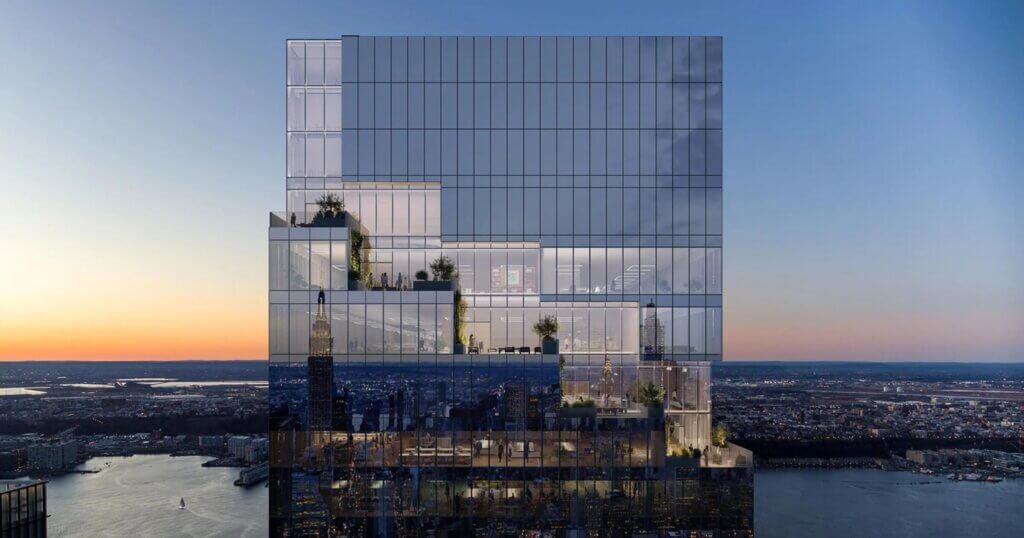
Photo courtesy of https://big.dk/
- Location: Manhattan, New York, USA
- Year built: 2023
- Typology: Office skyscraper
The Spiral is a 66-story office tower in New York’s Garment District featuring a continuous green ribbon outside that winds upward and connects floorplates. Each floor features landscaped terraces for informal outdoor breaks and offers views of the High Line, Midtown, and the city skyline. Timber ceilings are installed atop high-strength concrete slabs to enhance both aesthetics and acoustic performance. Floor-to-ceiling glass façades maximize daylight while reducing glare with frit patterns.
Internally, staircase-connected sky lobbies promote casual encounters and healthier building use. Vertical circulation integrates the community into office life, while utility shafts tie in sustainable systems, including rainwater harvesting, energy-efficient envelopes, and under-floor air delivery. The building is designed to host corporate tenants seeking wellness-centered work environments amid city density.
View the project: https://big.dk/projects/the-spiral
7. The Plus furniture factory
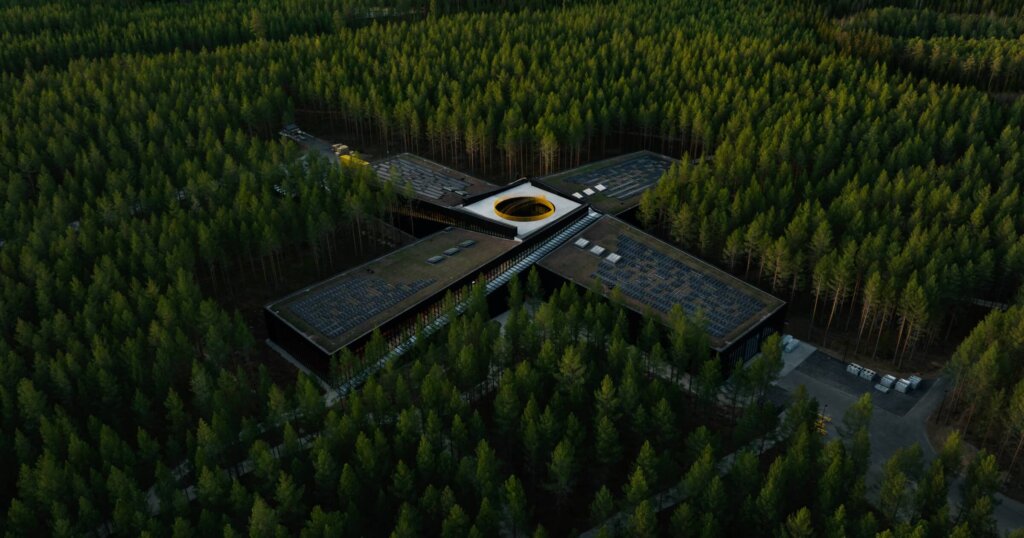
Photo courtesy of https://big.dk/
- Location: Magnor, Norway
- Year built: 2022
- Typology: Factory + visitor experience
The Plus furniture factory merges industrial manufacturing with public engagement. Located in a forested landscape, the factory produces furniture during the day while inviting visitors into an open, sunlit production hall. A winding visitor route parallels assembly lines, guiding guests through design, sawing, finishing, and packing zones. Viewing galleries overlook timber and steel workspaces in a transparent, active setting.
Above, a rooftop terrace and solar panel canopy create an opportunity to enjoy forested views while providing shading and generating energy. The hub features a café, meeting rooms, and an outdoor trail network that reconnects the factory to the surrounding woods. This is one of thos projects by Bjarke Ingels Group that reimagines what a factory can become, demonstrating how manufacturing can integrate public identity, ecology, and tourism to create a more sustainable and engaging experience.
View the project: https://big.dk/projects/the-plus
8. Flugt – Refugee museum of Denmark
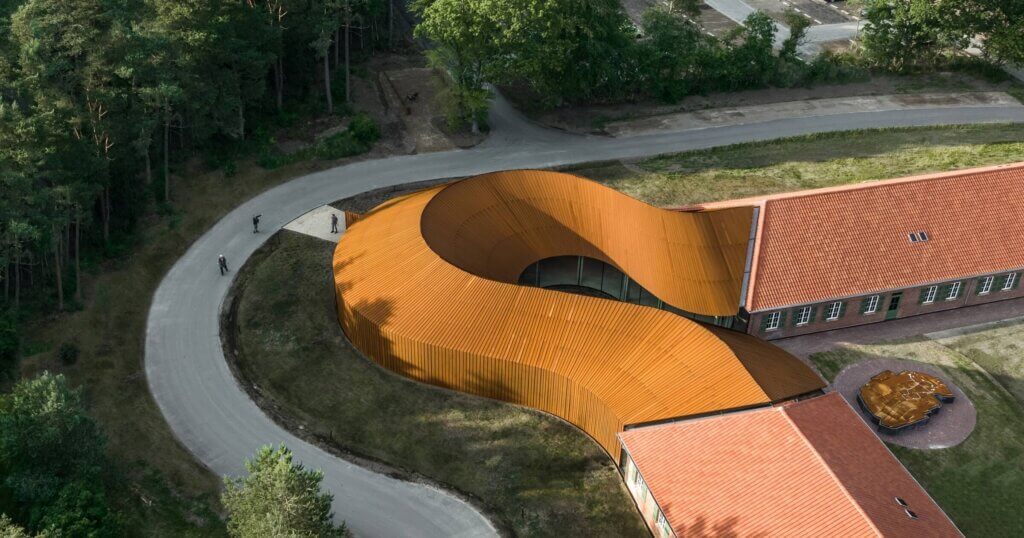
Photo courtesy of https://big.dk/
- Location: Oksbøl, Denmark
- Year built: 2022
- Typology: Cultural heritage museum
Flugt sits on the historical grounds of a WWII refugee camp, turning the site into a memory container through architectural form. The building’s roof follows excavated trenches (“moats”) and connects to existing landscape elements. Skylights problematically filter daylight to evoke emotional spaces aligned with themes of loss, displacement, and resilience.
Materials employed—brick, timber, and exposed concrete—speak both to local craftsmanship and gravity-bound narrative detailing. Galleries flow along shifted grades and angled walls, funneling visitors through periods of movement and transition. The building extends into the landscape, with outdoor zones featuring memorial plantings, story walkways, and seating areas overlooking the earthworks. This museum uses architecture to shape empathy and remembrance.
View the project: https://big.dk/projects/flugt-refugee-museum-of-denmark
9. Vltava Philharmonic Hall
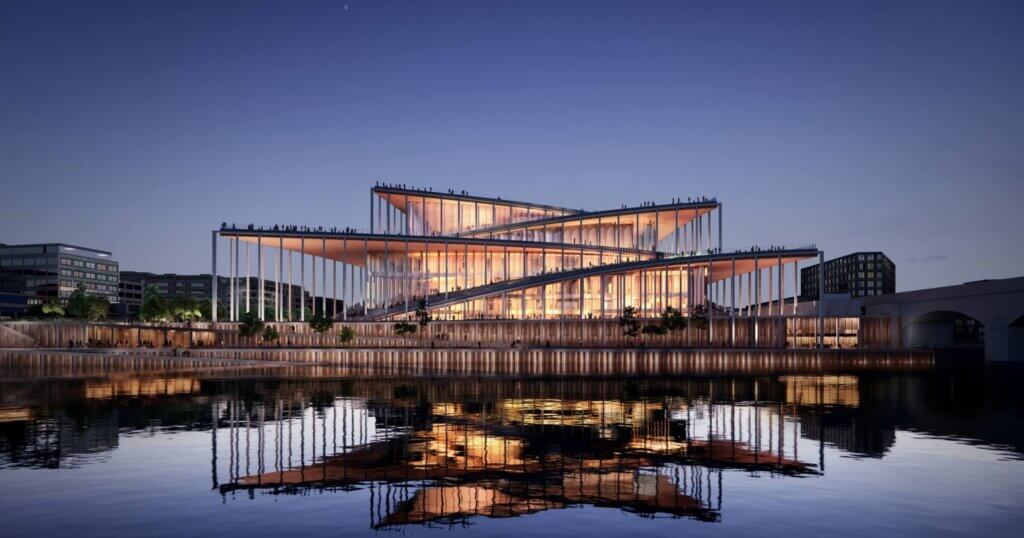
Photo courtesy of https://big.dk/
- Location: Prague, Czech Republic
- Year built: TBD (~2032)
- Typology: Concert hall
Designed as Prague’s first new national concert hall in over a century, Vltava Philharmonic emerges as a sculptural timber landmark on the riverbank. Layered timber panels wrap an exterior that responds to acoustic demands while fitting into the city’s scale. Terrace roof gardens overlook the Vltava and offer public access to civic space above performance venues. Foyer areas open visually to the river plaza, bringing music into daily urban life.
Inside, multiple halls sit underground to maintain historic sightlines, each tuned for classical, chamber, and community use. The central hall uses wooden volumes to enhance warmth and sound clarity, while rehearsal and workshop levels support local ensembles. This building plans to connect public programs to the neighborhood, promoting music outside the performances themselves.
View the project: https://big.dk/projects/vltava-philharmonic-hall
Final takeaways
These projects by Bjarke Ingels Group push architects, builders, engineers, and developers to rethink how structures can serve people and place. Whether reimagining energy plants as ski hills or packing neighborhood life into high-rises, their work tests form and function together. These ten projects offer strong examples of material innovation, social impact, and environmental strategy. Tradespeople on-site can learn from their public-private collaborations, green detailing, and form-finding techniques.
To stay informed on how these designs shape project delivery and site practice, subscribe to the Under the Hard Hat newsletter at https://underthehardhat.org/join-us/.
